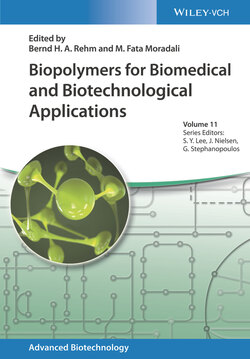Читать книгу Biopolymers for Biomedical and Biotechnological Applications - Группа авторов - Страница 25
2.3.1 Pullulan
ОглавлениеPullulan is a fungal polymer produced by A. pullulans. It is a neutral, linear glucose homopolysaccharide composed of α‐(1,6) maltotriose units [83,84]. Pullulan presents a unique linkage pattern showing remarkable physical properties, such as high solubility, adhesiveness, forming fibers, and thin biodegradable film capacity, which are transparent and impermeable to oxygen [15,85]. Therefore, pullulan offers a variety of potential industrial and medical applications. For a long time, pullulan membranes/films have been used as coating and packaging material in the food industry, but nowadays they are also being used in dietary capsule formulations. Pullulan‐based oral care products are also being commercialized. Due to the easy decomposition, it is used as coating in the paper industry. Modified pullulan is used as raw material in pharmaceutical applications, namely, nanoparticles, bioimaging, plasma expander, tissue engineering, etc. [84,86].
The cancer therapy and bioremediation are emerging markets for pullulan, due to its bioactivity with some cytotoxic molecules and the adsorption capacity for some heavy metals [84,85]. Moreover, currently several research groups are studying novel pullulan composites blended with other biodegradable materials (e.g. pullulan/dextran, pullulan/rice starch gel, and pullulan/cellulose) in order to obtain desired properties, such as thermal stability, high tensile strength, and emulsion stability [84]. Hydrogels of pullulan have been studied for three‐dimensional (3D) printing of scaffolds [87]. Hayashibara Co., Ltd. (Japan), is one of the companies that commercialized pullulan to be applied mainly as a thickening agent and edible coating.
